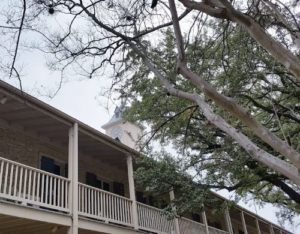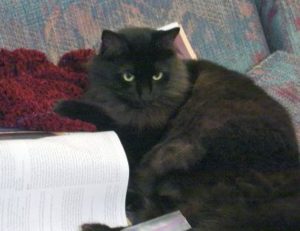Okay, let’s cast our memories back. Back, back, back. Farther than that. Okay, are you to 1978 yet? If not, we’ll wait.
Are we all here? Jimmy Carter is in the White House (I’m a big fan). David Berkowitz is tried and sentenced (I am a bit of a true crime geek). We had three popes, including the eerily prophetically named John Paul I, who really did put the “I” on his name (also a religion geek). And the top-grossing movie for the year? Grease.
If you’ve seen Grease, you’ll probably remember the drag racing scene. Remember the street they’re racing on? That’s not a street. It’s a river. The Los Angeles River, specifically.
There was catastrophic flooding along the Los Angeles River in 1938 and to fix the problem, they completely destroyed the river’s ecosystem. They dug the river deeper and widened it and covered the whole damn thing with concrete, as if that doesn’t add insult to injury.
In past visits, I’d seen the river occasionally, and it was just as heartbreaking an eyesore as you’d expect. I couldn’t believe that there ever had been a healthy river there.
In recent years, however, I’d been hearing that they’d been working on restoring the ecosystem. I’d heard rumors that there was enough water in some places that people were actually kayaking. This, I wanted to see with my own eyes. I spent quite some time trying to figure out exactly where the improvements had been made and how to get there. Finally I found an article in the Los Angeles Times giving directions that involved parking by the tennis courts in Griffith Park and walking behind the soccer fields. There, you’ll find a bridge over the Golden State Freeway which will lead you to the river. So, we did just that. It certainly was an experience, and on an early Monday afternoon in late July there aren’t a whole lot of people out and about, which made Alex very nervous. We got some fantastic pictures and got to watch an actual blue heron in the water of the river.
After a few blocks, Alex had enough. So we took what turned out to be the Alex Baum Bicycle Bridge back to Los Feliz, took Los Feliz back across the 5 and returned to our car. I’m glad I got the chance to see the revitalization of the river, even if it was kind of creepy and deserted, and I hope to get a chance to explore more (maybe on a weekend when there will hopefully be more people there) on future visits.
Also, coming back on the bridge is why I began my 24 Hours of Happy project. I was watching the video for Happy and noticed that Pharrell is on the Alex Baum Bicycle Bridge at one point. The end of the video directed me to the 24 Hours of Happy site and then I found the individual hours on Pharrell’s iamOTHER channel at YouTube, and it was all downhill from there.

But back to our final day. Traditionally when someone from our pharmacy goes on a trip, they bring something back for everyone else in the pharmacy — magnets, food, pens, whatever. I hadn’t found anything yet, so I looked up souvenir shops and found that most of the best ones are in Hollywood. We hadn’t been to Hollywood yet on this trip, so we figured why not?
We found a parking lot not too far from Hollywood Boulevard and hiked for maybe a quarter or a third of a mile. But what a quarter or a third of a mile! We walked down the Walk of Fame looking at all of the names and watching the people looking at all of the names. I noticed, by the way, that Betty White’s star and that of her late husband, Allen Ludden, face each other, which I thought was sweet. We also went past the establishment formerly known as Grauman’s Chinese Theater. You may be familiar with Grauman’s. It’s the place where all of the actors’ hand- and footprints are in the squares of the sidewalk. I dragged Alex from actor to singer to director just agog and I managed to restrain myself and only take one (not very well framed) picture of Bette Davis’s square. Finally Alex dragged my attention to the task at hand and we continued to the souvenir store. I resisted the temptation to stop by again on our way back to the car, but we needed to get on our way to the airport to return to Texas.
We got our souvenirs and made it back to the airport in plenty of time for our flight. Unfortunately we were seated on the “wrong” side of the plane, by which I mean the side that faced out onto the ocean. As it took off, the plane circled around the Palos Verdes Peninsula, and from that side of the plane I could have maybe gotten one last picture of Cabrillo Beach, the lighthouses, Seal Beach Pier and the Queen Mary. Well, now I know. We need to be on the left side of the plane on our flight back next time.
And there will be a next time. Not in 2018, and maybe not even in 2019, but someday.


